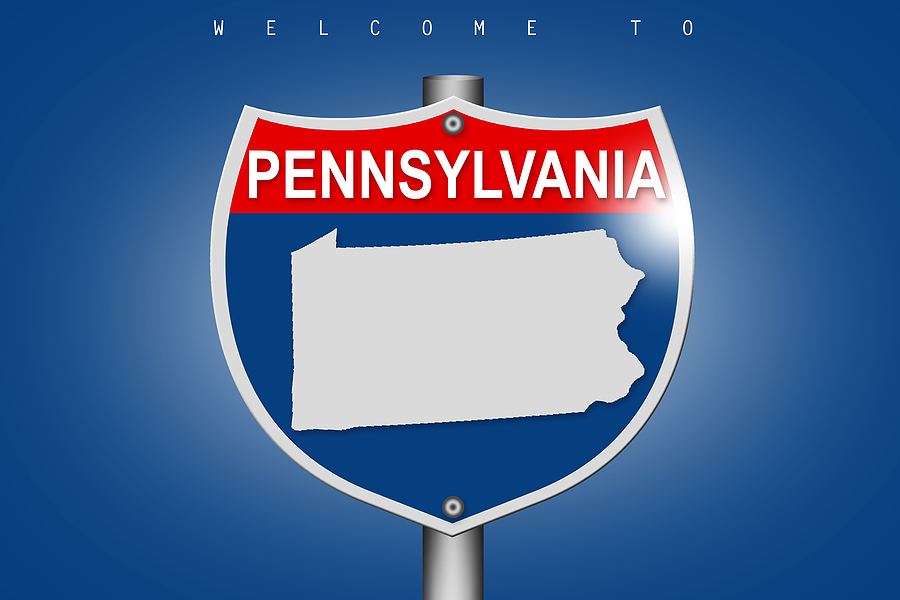New Study: PA Turnpike Has Highest Tolls per Mile in U.S.

Call it the high price of driving in Pennsylvania. A new study shows Pennsylvania’s Turnpike tolls are the highest per mile in the U.S.
The study by Lending Tree also showed that Virginia had the highest average maximum fee per mile, at $3.27, with the Keystone State second, at $1.73.
Additionally, Lending Tree listed Virginia as number one for the highest tolls for bridges and tunnels. Pennsylvania was seventh in that category. Also, the Delaware Water Gap bridge from Pennsylvania to New Jersey on I-80 came in 10th for the highest tolls for bridges and tunnels at $3.33.
The study showed the Holland Tunnel between New York and New Jersey was highest at $10.13.
For non-interstate road tolls, New York and Vermont ranked the highest “by a wide margin,” according to the Lending Tree analysis. New York averaged $2.96 a mile and Vermont’s average maximum fee was $2.50 or more for non-interstate roads.
The DVJournal asked readers to respond to the issue on Facebook.
Eileen Evans said, “Look at a map! Other than the Delaware Memorial Bridge or the Cape May ferry, there is absolutely no way for anyone or anything to travel in and out of New England to the rest of the country without going through Pennsylvania. Higher tolls shifts a lot of the road maintenance burden from just Pennsylvania residents to all those using the turnpike traveling in and out of N.J. and New England. But there should be some kind of mechanism for residents to get a discount, as the original E-ZPass was set up to do.”
“The Pennsylvania Turnpike Commission is hemorrhaging funds because they threw out valuable employees. Threw the toll collectors to the curb! So few drivers are paying their tolls by check. What was Gov. Wolf thinking?” asked Ika Werner.
“Yes, the tolls should be lower. We take non-toll roads when possible,” said Claudia Haviland.
Howard Mark said, “Wolf and Shapiro eliminated toll workers. Why haven’t costs come down? Maybe this is what [Sen. Bob] Casey is talking about with his nonsensical shrinkflation.”
“They will never be lowered so long as state legislators have their tolls reimbursed,” said Michael Lake.
“I have family in Ohio. The turnpike makes sense even at the cost given the extra time for state roads. It is $60 or so round trip but I don’t go that often. If were commuting to work every day on it and piling up tolls I might feel differently,” said Rich Heiland.
Vicki Flannery said, “I avoid it like the plague. Even if it means lost time. I will take every back road to get to my destination.”
Marissa Orbanek, a spokesperson for the Pennsylvania Turnpike Commission, said the Lending Tree Survey lists the Delaware River Bridge as its source for the maximum fee but it doesn’t “match our rates.”
“This is also a spot toll, so it’s not an accurate representation of tolls on our highway,” Orbanek said.
“While we understand companies wanting to use data to inform their customer base, this survey isn’t an accurate representation of tolls or our rates, nor does it follow industry metrics. Despite being the second largest in the U.S. with the most miles, the Pennsylvania Turnpike has tolls that are 20 percent below average and are in the mid-range for U.S. tolling entities. We also offer 24-7 roadside assistance, a dedicated maintenance force, 17 service plazas for safety and convenience, and a dedicated State Police Troop.”
Dan Shepard, an editor with Lending Tree, noted, “Our methodology noted the data is from 2021 — the latest available from the Federal Highway Administration (FHWA). This could lead to a difference in the rates we have versus what they expected them to be in the report.”
“Either way, we’re confident with the results of our study based on the sourcing,” he said.
Lending Tree said the Jan. 1, 2021 information was the latest available via the FHWA. The company further said that “researchers evaluated data for toll roads, bridges and tunnels by interstate and non-interstate systems.
The researchers then calculated each toll site’s maximum passenger vehicle fee per mile. Toll sites that didn’t have a maximum passenger vehicle fee weren’t evaluated. Once each toll facility’s maximum passenger vehicle fee was calculated, researchers then found the average for each state for both road tolls as well as bridges and tunnels. These averages were then used to rank each state in the four different categories per mile.”
One reason the Pennsylvania Turnpike tolls are so high is Act 44, a 2007 law requiring the Turnpike to give PennDOT $450 million a year. That was later reduced, but the Turnpike must pay $50 million for public transit and another $50 million goes into the state’s general fund.
Mark Digiambattista said on Facebook, “Pennsylvania spends too much and uses the tolls to balance the budget.”
Please follow DVJournal on social media: Twitter@DVJournal or Facebook.com/DelawareValleyJournal


